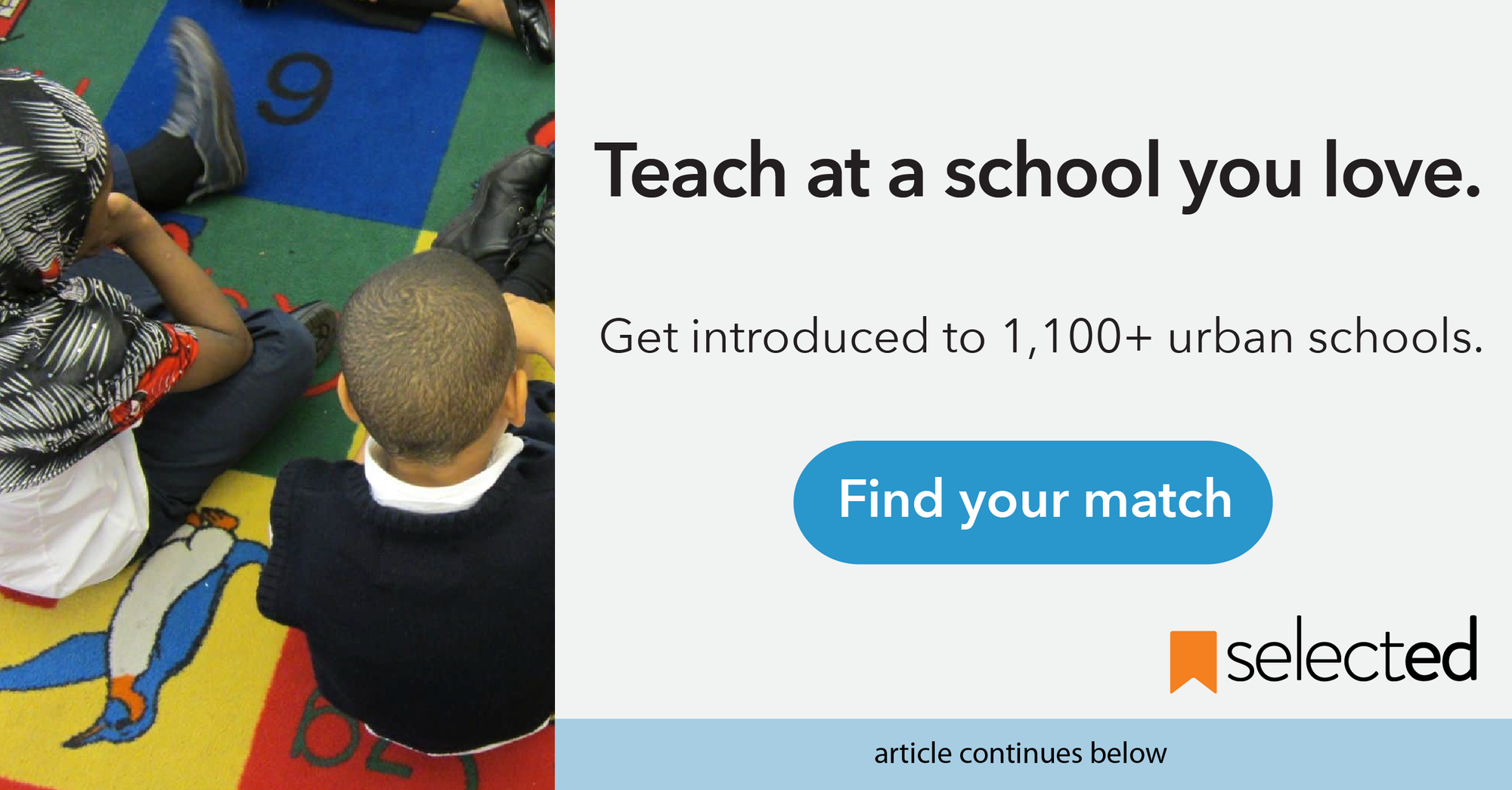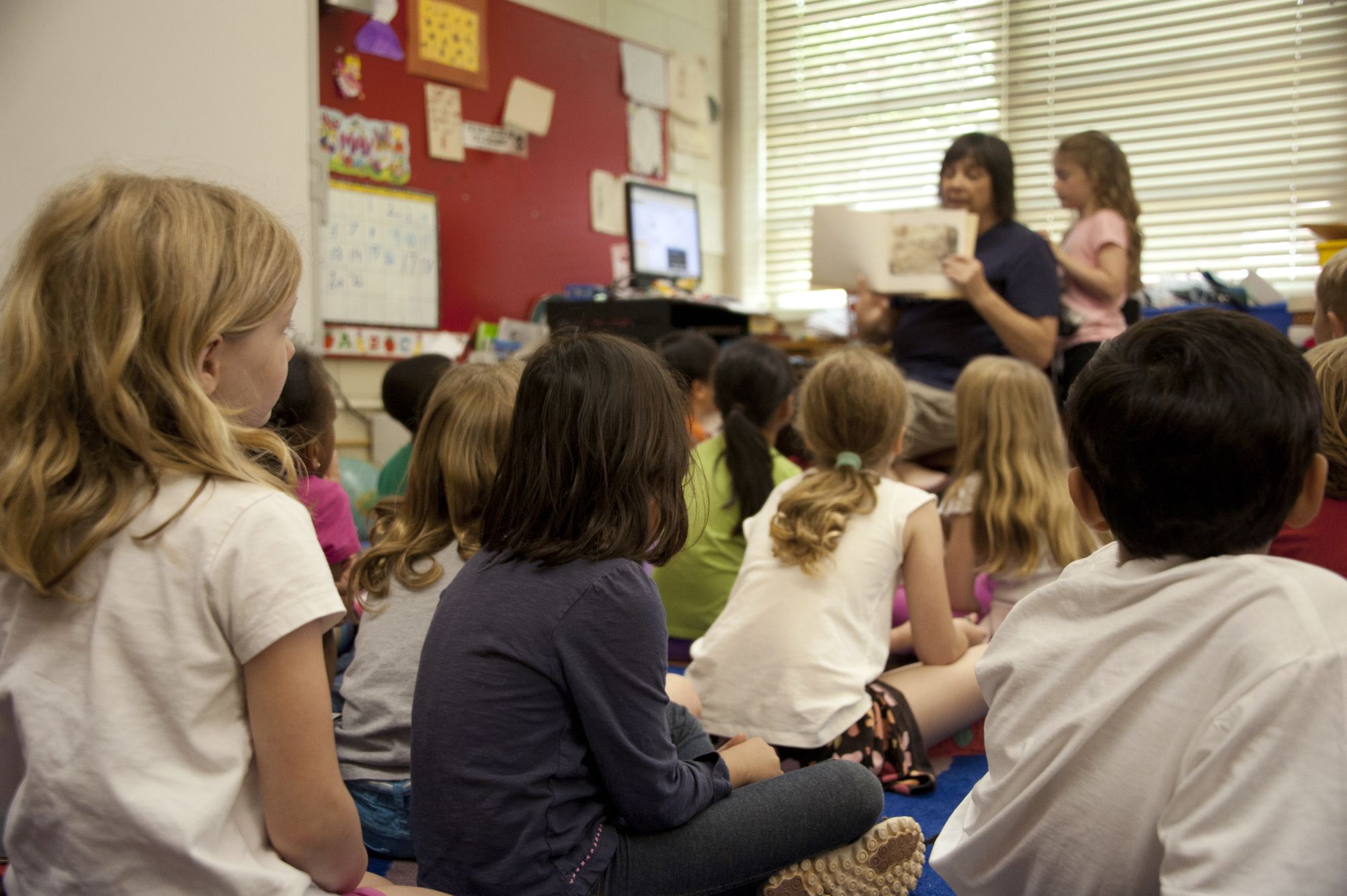Foster Relationships to Create Gender Equity In STEM Classrooms
Discover how you can foster relationships to create gender equity in your STEM classroom. Understand the ways in which your pedagogy challenges or affirms systems of inequity across lines of difference.

During my third year of teaching, I received some feedback that changed my practice forever. In this conversation with my coach, I realized for the first time that my own classroom was a place of gender inequity. She explained that after several observations in my classroom, she had noticed a consistent pattern: the boys in my classroom had a tendency of participating in class discussion much more frequently than the girls. She went on to add that, in brief interviews with my students, across gender lines, there were significant differences in student attitudes about the relevance of science in their lives.
Presented with the hard facts, I felt extremely unsettled, even personally attacked. After-all, a large part of the narrative that shapes my vision for what is possible for students is that they can see the importance and utility of science in their own lives. This is something I pour a lot of my being into, 60+ hours each week. Rarely does an hour pass where I do not think about my students and how to better serve them. Yet, here was compelling evidence that I was failing a large percentage of my students on the basis of gender, something over which my students had no control. So what I appreciated most was the way in which my coach posed the next question, “What can we do to change this together?”
Get Yourself an Accountability Buddy
Creating gender equity in any classroom, let alone in a discipline that is historically dominated by white males, is a challenge that is better accomplished as a team. As teachers it is often difficult to collect an unbiased picture of the ways in which our pedagogy challenges or affirms systems of inequity across lines of difference. Moreover, it is challenging to find time in our busy days in the classroom to do the work of collecting hard, concrete data about the extent to which students feel comfortable and affirmed in our classroom. Even when we do find the time to collect data about classroom climate, it can be extremely difficult for our students to be honest in surveys and in-person conversations with their teachers. Many students, particularly those in middle school, feel that criticism would disappoint their teacher. Therefore, they curb their responses to reflect positively on the classroom environment.
For each of these problems it becomes important to find a trusted mentor, administrator, or peer who can help you reflect on the extent to which you’ve established a classroom environment that is gender inclusive. While observations and walk-throughs are often loathed by educators, they can be highly valuable opportunities to gather meaningful, objective information related to our own professional goals.
Share Your Classroom Vision and Goals
If creating a gender inclusive space is an expressed goal of an educator, it is helpful to ask the administrator, coach, or colleague to come through the classroom and ask an equal number of boys and girls an agreed upon set of questions. As I have engaged in this work with a mentor we have focused on the following:
- Why is it important to learn about this (subject/topic/lesson)?
- How could you use this knowledge or experience in your future?
Asking broad, open-ended questions about student experiences in the classroom was very valuable because it gave my students an opportunity to share honestly the impact the classroom experience was making on their own lives. In coaching conversations, the teacher and coach can work together to ask:
- If we look at the responses based on gender, do we notice any patterns in student responses?
- When reflecting on classroom participation: Who is called on? Who voluntarily participates? Is there a difference in the depth of response received?
And if noticeable patterns exist, the team can start to ask:
- Why do these patterns exist?
- What can be done to change the narrative?
Reflect + Act
The question remains: What can a teacher do if they find that their classroom is a space of gender inequity?
First, it is important to acknowledge that creating equity is always a work in progress. There is variability to student experiences in the classroom day to day and those experiences are sometimes influenced by factors outside of the classroom. This is hard work without easy solutions and it requires ongoing reflection and collaboration. From time to time, failure will be inevitable, but that cannot be allowed to define the classroom experience for students.
Second, teacher-mentor teams can work to do a root cause analysis by listing all the possible reasons for gender inequity in the classroom and digging deep to discover what actions can be taken by the team to develop meaningful solutions. For example, in my own classroom, my mentor and I noticed that there were significant differences in the relationships that I had built between male and female students. I had built very strong, positive relationships with many of the boys in the classroom because they had also been athletes on the basketball and baseball teams I coached - or I had attended one of their football games outside of school. However, I had done very little to build the same quality relationships with the girls in my classroom. So my working solution became to build better relationships with my female students so that they would feel a similar level of comfort and support in my classroom. I came up with three clear steps to follow, and for my mentor to observe:
- Start with Small Connections: The start to any relationship is quite simple, it’s finding the entry point to conversation. This might be asking about the band or artist on a student’s t-shirt or folder, maybe it’s about the instrument case they carry with them, or the poster you saw them hanging during lunch. Asking questions from a place of genuine curiosity can open a lot of doors.
- Invest the Time: Not everyone is going to seek your attention. They won’t all ask questions or share answers. But each of your students needs to find a connection to the class in order to connect with the material. Make the time to schedule 1:1 check-ins with your students. Share their current grade, dive deeper into their thoughts on a current assignment, find out if their partner pairing is mutually beneficial - whatever the check-in is about, when students have an opportunity to share with you, more often than not, they will. This opportunity will build the trust they have in you, and the confidence they have with the content.
- Be Vulnerable: Share yourself with students. After-all, you’re asking them to do the same. Consider tying your life to the material you’re teaching. Post photos of you and your loved ones near your desk, mention the 5k you’re taking on, or remind students to attend the basketball game on Friday - which you also happen to coach. For some students, they need to feel a connection to their teacher before they open up to new content. And for the majority, seeing their teachers as human allows them to see real-world applications to the material you’re teaching.
Follow-Up and Own Your Outcomes
Finally, it is important to follow up on the agreed upon action plan. Once my mentor and I had committed to the goal of building stronger relationships with female identifying students, we could monitor the extent to which that solution had succeeded in creating a more gender inclusive space. As the year progressed, we observed that more female students had begun to actively participate in class and that responses about student experiences in the classroom showed less variability between boys and girls. For my students, none of this would have been possible without establishing a partnership with a mentor who I trusted shared the same vision for kids and who I knew wanted to see this vision alive and well in my classroom.
Through this partnership, I now fully realize the importance of honest self-reflection. I know that this - and that I as an educator - are a constant work in progress. Reaching full gender equity in my science classroom won’t happen overnight, but it is something I commit to work toward throughout my career.
About Selected
Selected helps teachers find jobs at schools they love. We offer a free school matching and career support platform for teachers that connects them with 1,200+ PK-12 public and independent schools in urban metro areas in the Northeast and West Coast, including New York City, NJ, CT, Philadelphia, Washington DC, Boston, and Los Angeles. Create a FREE teacher profile in 5 minutes and connect with hiring schools immediately!





